Concrete Innovations
Since the Roman Empire, concrete has been used as a construction material because of its versatility. Concrete can take on several forms and serve many functions. Unité d’Habitation, by Le Corbusier, is an example of using concrete to easily transition from floor to wall and from rooftop to pool. Concrete can also be formed into geometric and organic shapes, as demonstrated by Richard Meier in the Jubilee Church.
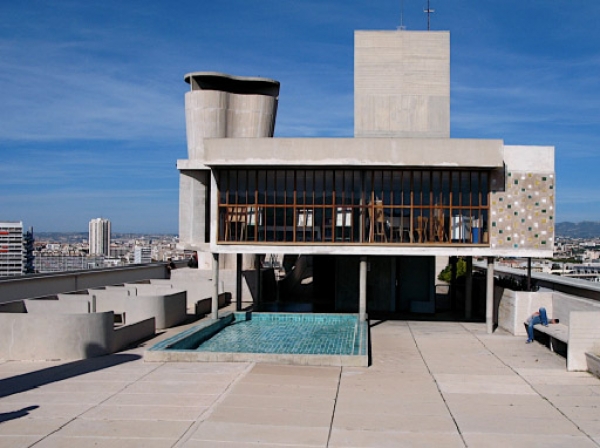
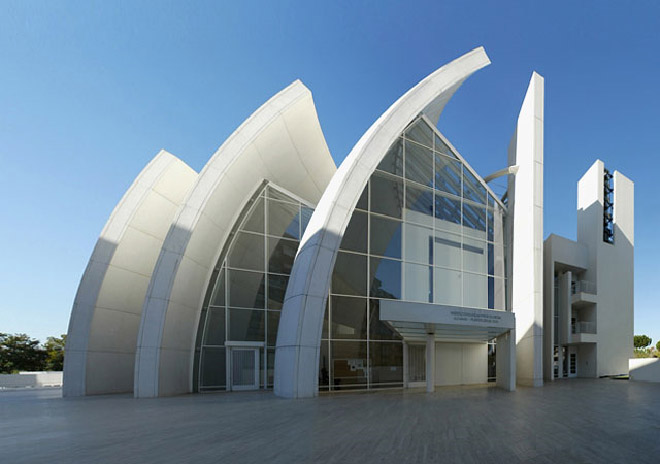 Experimentation with concrete mixes over the years resulted in innovations such as the use of pigments to create color and optics to create transparency. One recent innovation in concrete has provided architects and engineers with new opportunities and possibilities. This new type of concrete, Ductal, is just as versatile as regular concrete and, after 10 years of research, has proven to be not only stronger than regular concrete, but significantly more flexible, with a compressive strength as high as 30,000 PSI and a flexural strength of 6,000 PSI. Increased flexibility allows structures to stretch rather than crumble, creating safer and more stable structures. Ductal concrete’s strength comes from the 2% to 4% fiber composition in the mix. Along with being flexible, Ductal concrete is resistant to freezing, abrasion, and chemicals, and requires less maintenance then regular concrete. Ductal concrete allows builders to take advantage of prefabrication, thereby cutting costs and shortening construction schedules.
Experimentation with concrete mixes over the years resulted in innovations such as the use of pigments to create color and optics to create transparency. One recent innovation in concrete has provided architects and engineers with new opportunities and possibilities. This new type of concrete, Ductal, is just as versatile as regular concrete and, after 10 years of research, has proven to be not only stronger than regular concrete, but significantly more flexible, with a compressive strength as high as 30,000 PSI and a flexural strength of 6,000 PSI. Increased flexibility allows structures to stretch rather than crumble, creating safer and more stable structures. Ductal concrete’s strength comes from the 2% to 4% fiber composition in the mix. Along with being flexible, Ductal concrete is resistant to freezing, abrasion, and chemicals, and requires less maintenance then regular concrete. Ductal concrete allows builders to take advantage of prefabrication, thereby cutting costs and shortening construction schedules.
One project to take advantage of Ductal concrete is the Shawnessy Light Rail Transit (LRT) Station in Calgary, Alberta, Canada. Architect Enzo Vicenzino chose Ductal specifically because the material's flexibility allowed his design to come to life. Steel forms were used to cast half shell structures, columns, tie beams, struts and troughs, all out of Ductal concrete. The completed project resulted in a durable and low maintenance structure.
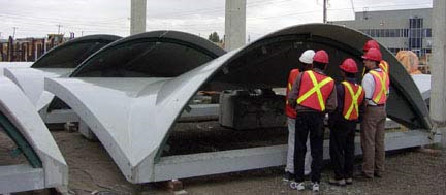
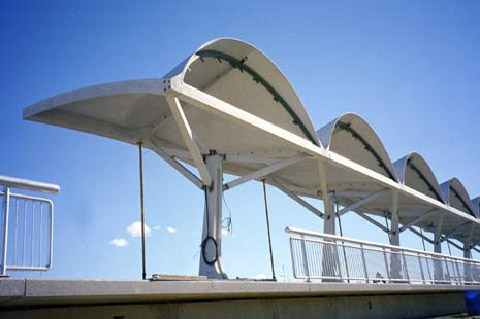
Another successful Ductal concrete project is the Pont du Diable Footbridge, a walking bridge in France. By using Ductal concrete, the engineer and architect, Romain and Rudy Ricciotti, were able to create a bridge that spanned roughly 300 feet (70m) without a single support. The bridge was created out of fifteen prefabricated sections. The completed bridge is only four centimeters thick. This project was possible due to the flexibility, strength and lightweight properties of Ductal concrete.
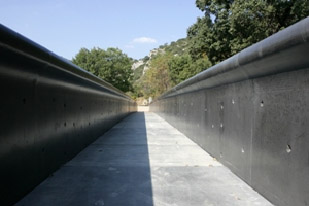
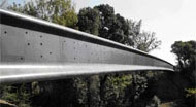

Danielle Burns
Danielle is a third-year architecture student at The Ohio State University Knowlton School of Architecture. Danielle is inspired by design and construction and having the opportunity to work as a contributing writer for Buildipedia.com.

